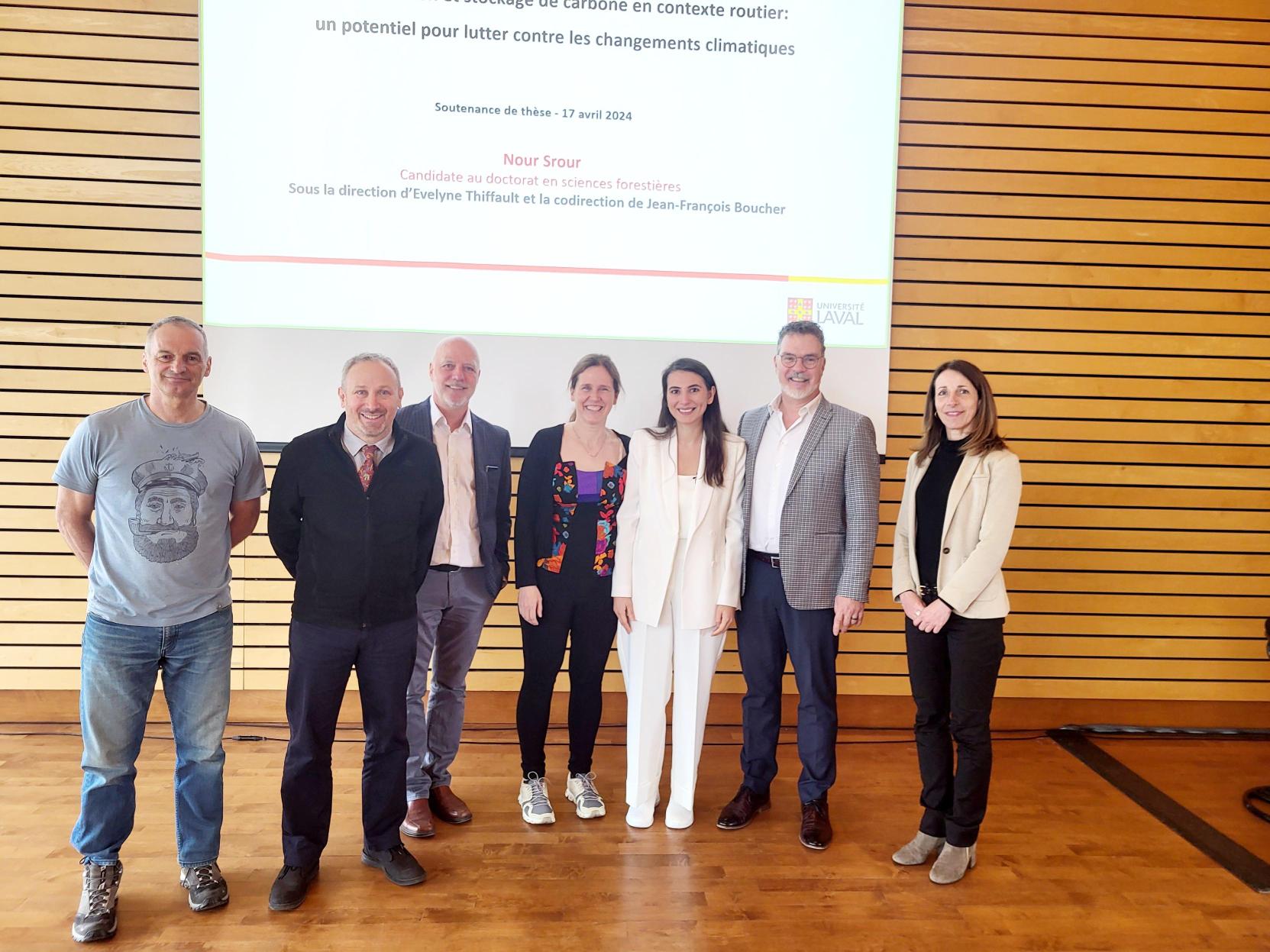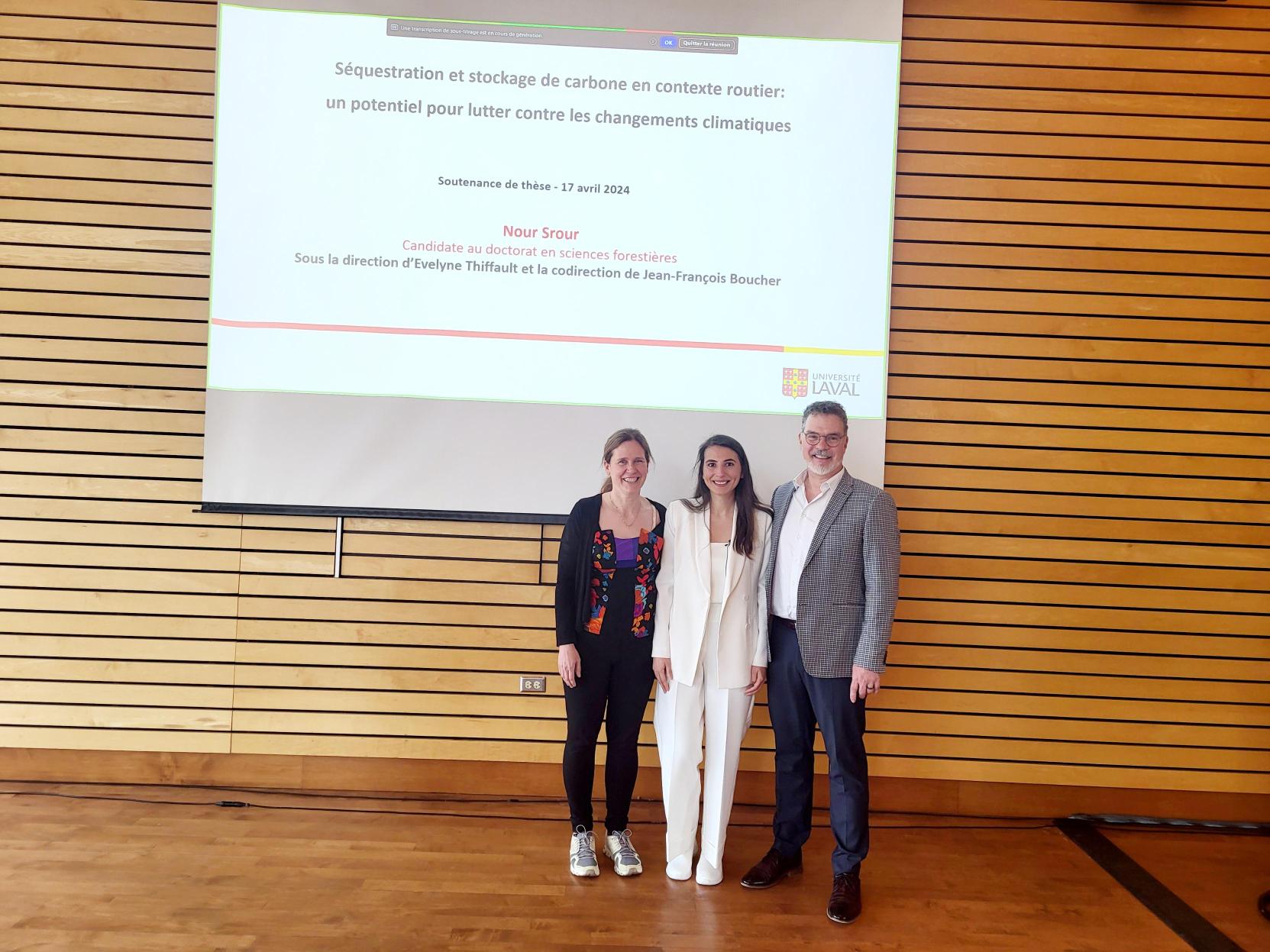Congratulations to Nour Srour on her successful doctoral defense!
Congratulations to Nour Srour for brilliantly defending her doctoral thesis in forestry science on April 17, 2024, under the expert guidance of Evelyne Thiffault at the Faculty of Forestry, Geography and Geomatics (FFGG), Laval University, and Jean-François Boucher at the University of Quebec at Chicoutimi. Her project, entitled « Carbon sequestration and storage in road contexts: a potential for combating climate change », opens up new perspectives for mitigating climate change.
Congratulations, Nour, on this remarkable milestone in your academic career! We wish you a future filled with success, happiness and achievement!
The members of the jury were: Mr. André Desrochers (President, FFGG), Mme Evelyne Thiffault (Director of Research, FFGG), Mr. Jean-François Boucher (Co-Director of Research, University of Quebec at Chicoutimi), Mme Monique Poulin (Examiner, Faculty of Agricultural and Food Sciences, Laval University), Mr. Rock Ouimet (External Examiner, Ministry of Natural Resources and Forests) and Mr. Luc Vescovi (External Examiner, Ministry of Transport and Sustainable Mobility).

From left to right: Mr Rock Ouimet, Mr Luc Vescovi, Mr André Desrochers, Mrs Evelyne Thiffault, Mrs Nour Srour, Mr Jean-François Boucher and Mrs Monique Poulin.

From left to right: Mrs Evelyne Thiffault, Mrs Nour Srour and Mr Jean-François Boucher
Thesis title: Carbon sequestration and storage in road contexts: a potential for combating climate change
Abstract : The transportation sector is considered the primary source of GHG emissions in Quebec. Afforestation and management of existing road ecosystems play an important role in carbon sequestration and mitigation of climate change. This thesis aimed to evaluate the afforestation potential of road ecosystems for carbon sequestration and mitigation of climate change. The analyses were carried out on ecosystems located near the road network in Quebec and distributed in the two bioclimatic domains: the sugar maple-basswood and the sugar maple-bitternut hickory. The results showed that roadsides dominated by trees and shrubs represent an important reservoir of carbon; in addition, the presence of vegetation with high functional dispersion (FDIS) can enhance carbon storage in both the ecosystem and the biomass. Protecting these sites can preserve their carbon stocks, while planting trees to accompany existing vegetation would increase the functional diversity of these sites and, therefore, their carbon sequestration potential. Furthermore, the simulation results suggested that the afforestation of anthropized or artificialized sites can create a new forest cover and increase carbon sequestration on these sites. However, the afforesting of abandoned agricultural land may not provide significant benefits, as natural succession can take place and sequester carbon without human intervention. While the field inventory of road sites showed that the soils of roadsides represent a significant reservoir of carbon, these soils are different from those found in the forest environment and are exposed to contamination from heavy metals and de-icing salts. That said, this state of road soils does not affect the stability of carbon in the soil; it is even possible that organic matter in the soil immobilizes these metals and inhibits their leaching. Finally, the lack of documentation on the evolution of the natural vegetation of roadsides makes it necessary to remeasure control sites over time; monitoring and documentation can help establish reference scenarios and estimate better the effect of roadsides afforestation in terms of carbon sequestration and mitigation of climate change.

